Air distribution system for TV and movie production studio features whisper-quiet sound mitigation
This TV and movie production studio in Montreal was at the time the set for the Netflix series “House of Cards.”
The space contained two recording studios: One 247’ long by 76’ wide, with a 40’ ceiling, and the other 247’ long by 85’ wide with a 63’ height.
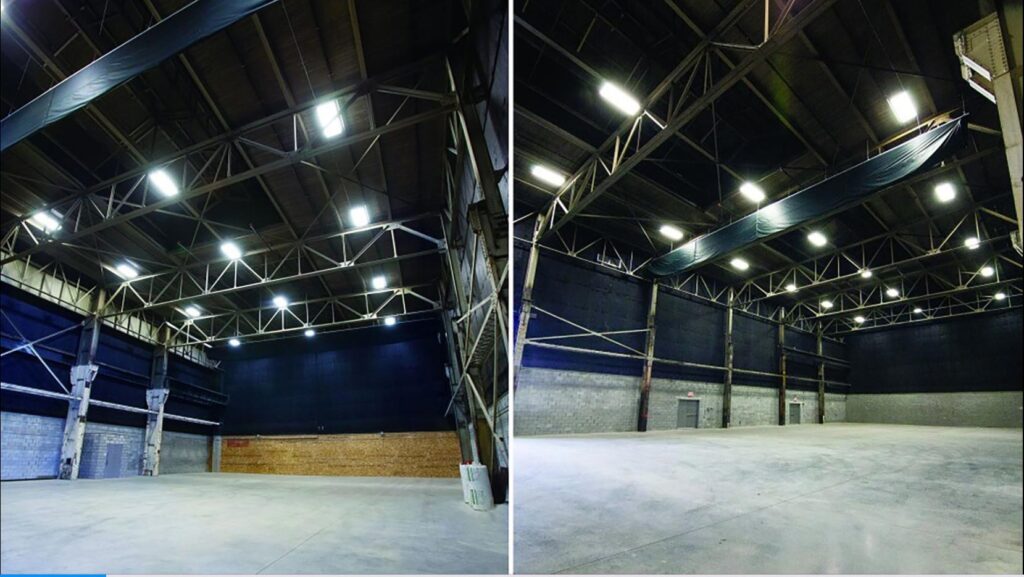
The Challenge
The parameters of this project included critical values for cooling volume, target velocity, and noise level.
Cooling Volume – We had two 25-ton units for a total airflow of 20,000 cubic feet per minute per studio.
Target Velocity – We also had an owner-specified requirement for an air velocity of 25 feet per minute (fpm) in the occupied zone, which is exceptionally low. We typically design for a velocity of 50 fpm in the occupied zone. As an example, 50 fpm is roughly the speed of air movement created when you walk normally across a room. We don’t know why the owner wanted such low air velocity, but that’s what they requested and what we worked with.
Noise Level Limitation – To ensure ideal sound conditions for filming and recording, the owner had specified a maximum noise level of NC-20, which is also exceptionally low. For reference, a typical home probably falls somewhere in the NC-30 range, give or take a bit. But the noise level curve is logarithmic, which means that reducing from NC-30 to NC-20 is a massive reduction in noise and is very difficult to achieve. A NC-20 noise level is roughly equivalent to someone whispering in an otherwise silent room. Although we don’t have access to data for comparison, it is likely impossible to achieve a noise level so low with a traditional metal duct system using a register-diffuser arrangement.
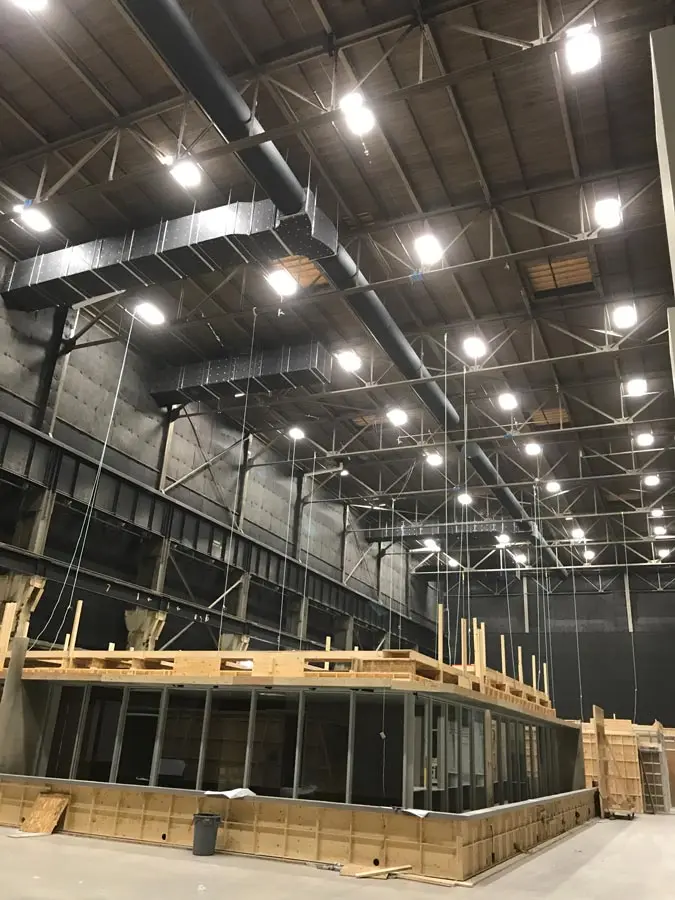
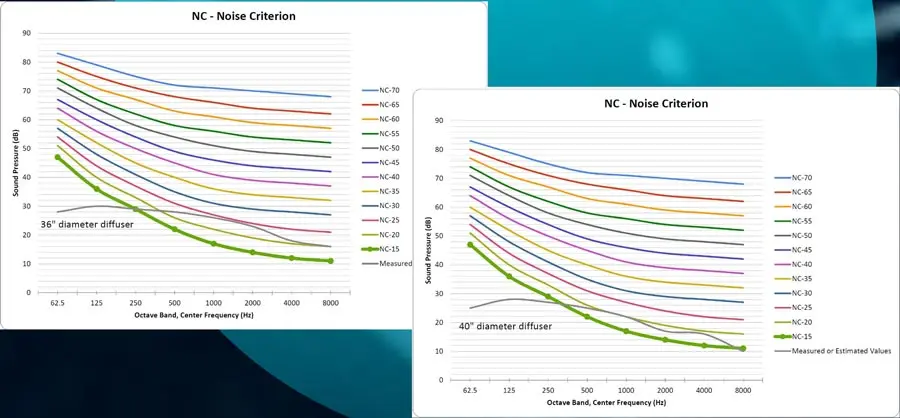
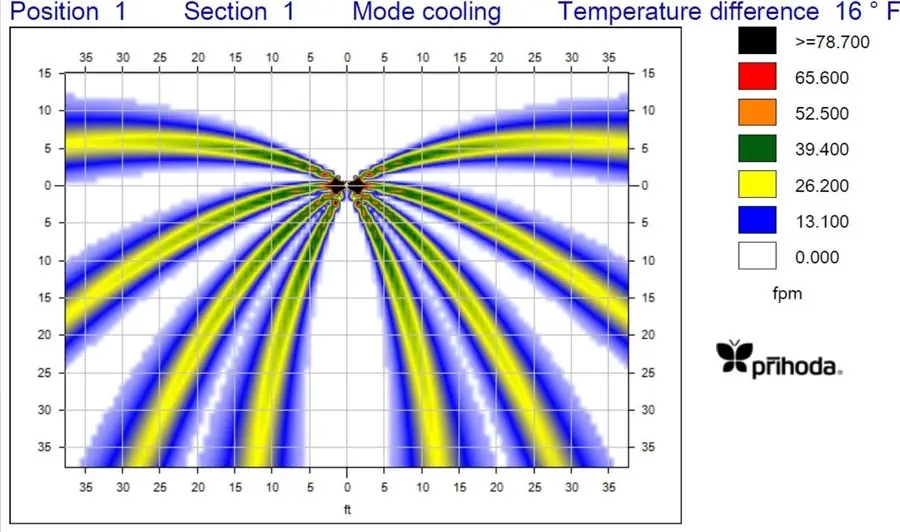
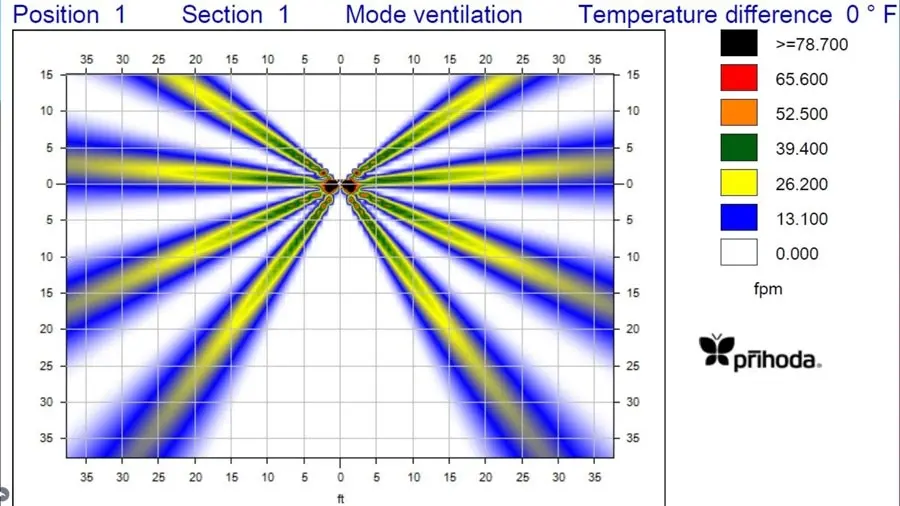
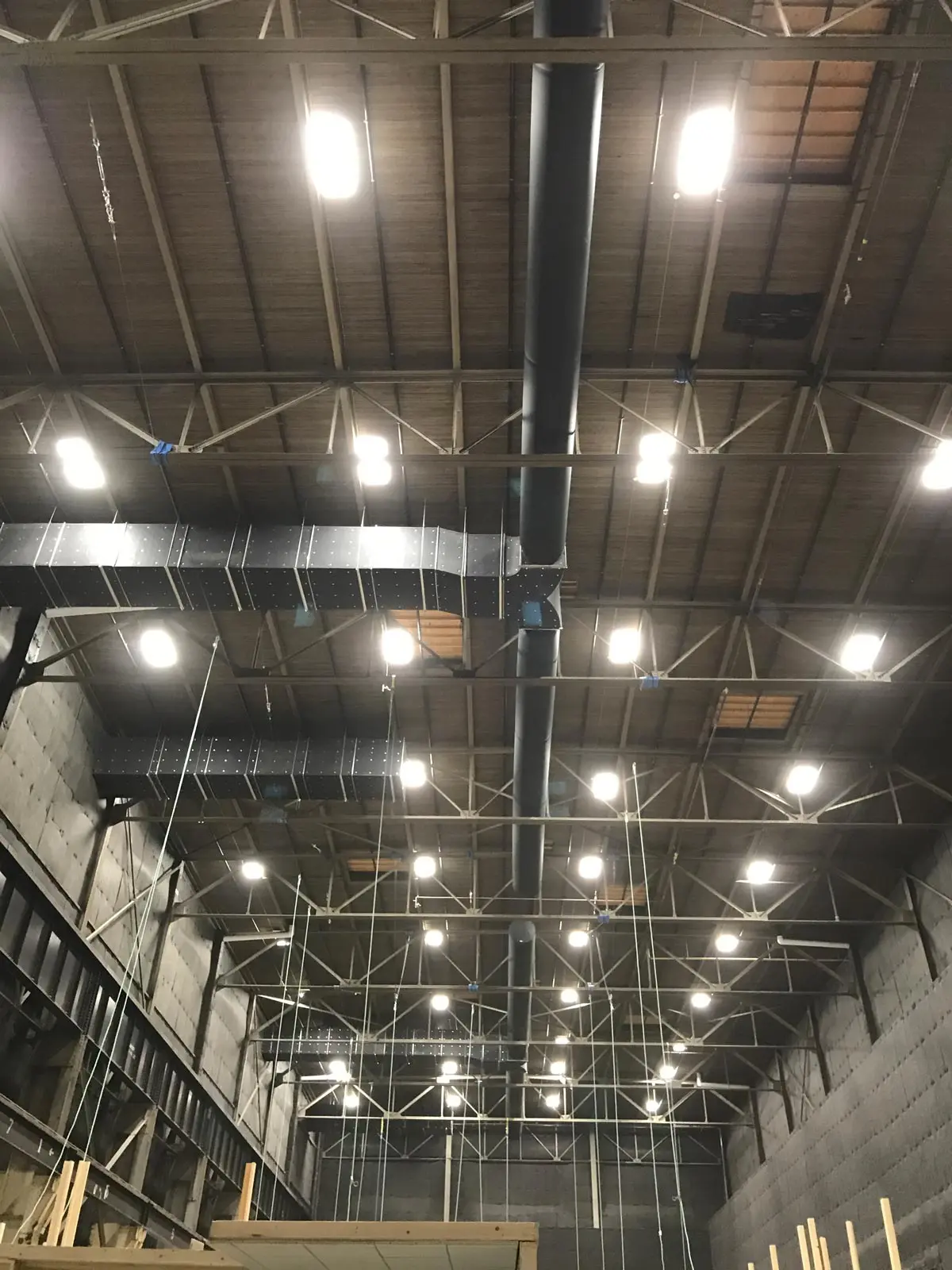
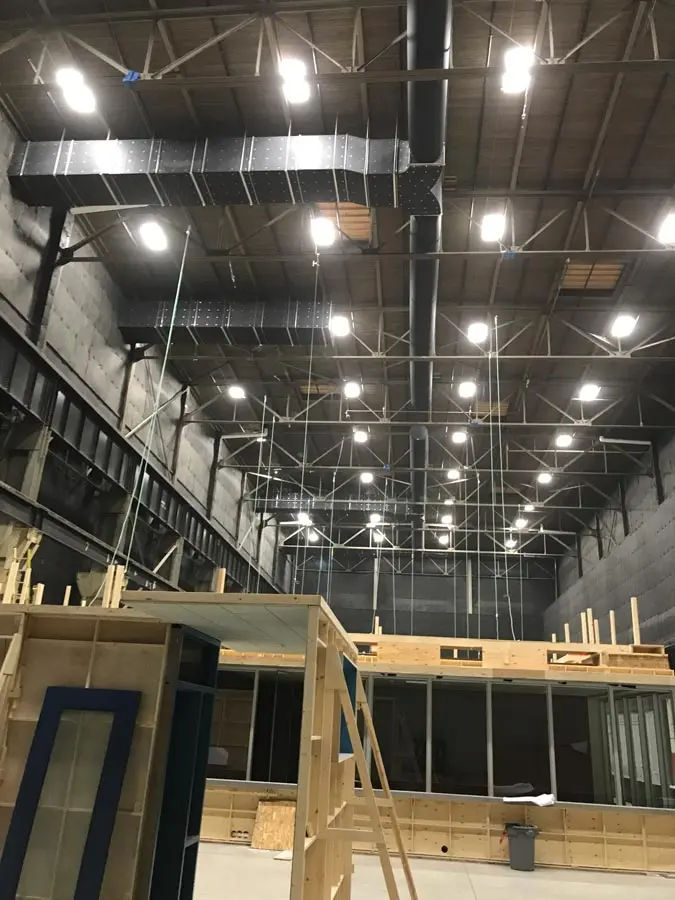
The Solution
The two big challenges we face on this project were: (1) to distribute a large volume of air into a large space with very low terminal velocity, and (2) to keep noise levels at or below NC-20. This meant distributing 20,000 cfm of air to each of two studios while producing no more sound than a whisper. The solution relied on our proprietary Air Tailor software, used to generate precise air flow profiles and system sound analyses.
The design capabilities of our Air Tailor software allowed the final, installed systems to provide evenly distributed, low-velocity air across the entire space of each studio, while producing virtually no noise. No other fabric duct company can provide this level of precise, custom-engineered air distribution.
Project Partners
Architect: Smith Dalia
Mechanical Engineer: Johnson, Spellman & Associates
Construction Manager: Structor Group
Mechanical Contractor: Maxair
Prihoda Rep: Holden & Associates
Fabric Duct Diffusers: Prihoda North America
 English
English Français
Français
